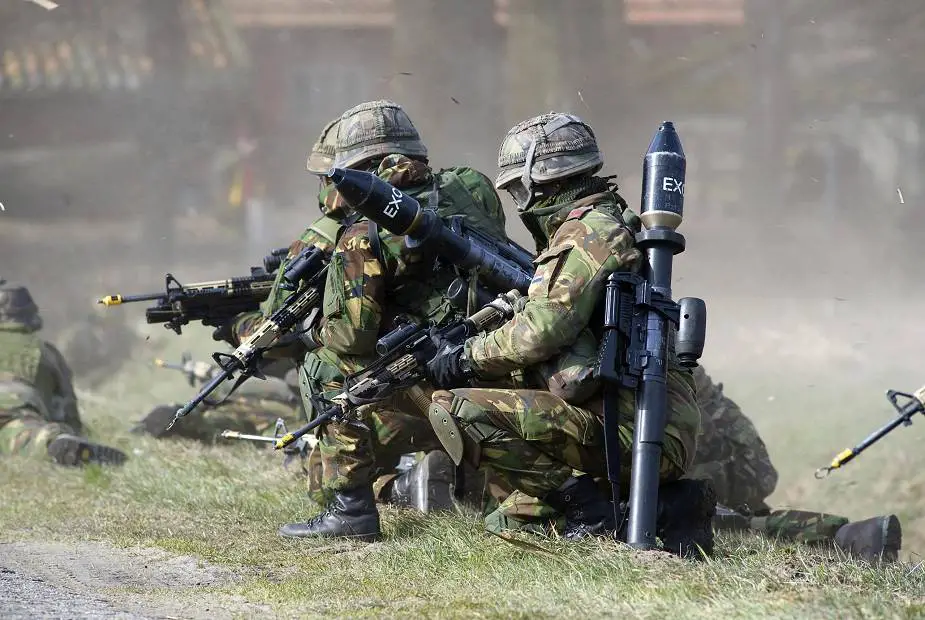According to information released by the website "POLITICO" on February 26, 2022, Germany has authorized the Netherlands to supply 400 Panzerfaust 3 rocket-propelled grenade launchers to Ukraine. The Netherlands will also supply 200 Stinger man-portable air defense missile weapons to Ukraine.
Follow Army Recognition on Google News at this link

Dutch soldier carrying a Panzerfaust 3 rocket-propelled grenade launcher. (Picture source Reddit)
The Panzerfaust 3 is a man-portable anti-tank weapon, which was developed between 1978 and 1985 and first entered service with the German in 1987. The anti-tank weapon was designed and developed by the German company Dynamit Nobel.
The Panzerfaust 3 is operated by at least 11 countries and has first used in combat conditions during the conflict in Afghanistan. The Panzerfaust is in service with the Dutch army. According to international regulations, the Netherlands could not transfer weapons purchased abroad without the agreement of the producing country.
The Panzerfaust 3 series of launchers is a compact, lightweight, shoulder-fired, unguided antitank weapon series. It consists of a disposable canister with a 110-mm warhead and a reusable firing and sighting device. The weapon is able to fire DM12, DM12A1, and DM22 rockets.
The DM12 and DM12A1 projectile consists of a shaped charge warhead and is filled with Octol 7030, while the tandem DM22 warheads are made of PBX octogene (ca. 95% β-HMX) including the propulsion unit. The baseline DM12A1 rocket has a multi-purpose High Explosive Anti-Tank (HEAT) warhead. It is used against tanks, armored vehicles, and structures. It penetrates 800 mm of steel armor.
The effective combat range of Panzerfaust 3 is from 15 to 300 meters against moving targets and from 400 to 600 meters against static targets. An optical sight with a line pattern fixed to the reusable firing mechanism enables it to engage moving or static targets. To ensure night combat capability, a night-vision device or residual light amplifier can be set up in front of the optical sight.
Defense News February 2022














